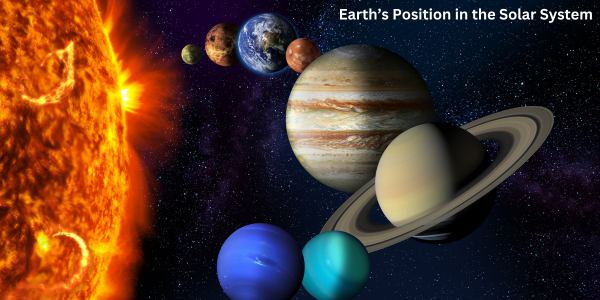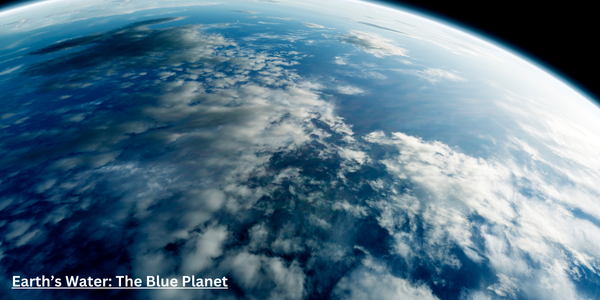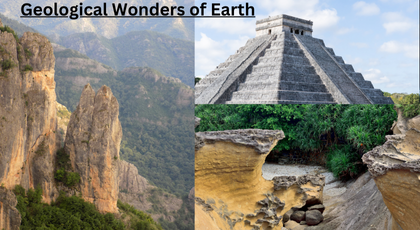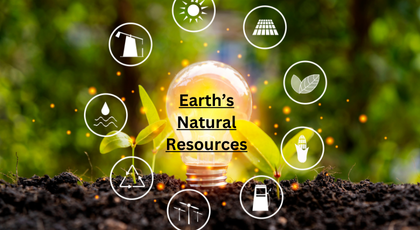
Earth, our home in the vast universe, is a remarkable planet filled with wonders. From its breathtaking landscapes to its diverse ecosystems, Earth is a treasure trove of fascinating facts waiting to be explored. In this blog, we’ll dive deep into the many aspects that make our planet unique.
The Unique Characteristics of Earth

Earth’s Position in the Solar System
Earth is the third planet from the Sun and the only known celestial body to support life. It orbits the Sun at an average distance of about 93 million miles (150 million kilometers). This perfect distance allows Earth to maintain a suitable temperature for life to thrive.
Earth’s Composition
Earth is composed of four main layers: the crust, mantle, outer core, and inner core. The crust is the thin outer layer where we live, while the mantle makes up the majority of the planet’s volume. The outer core is liquid, and the inner core is solid, primarily made of iron and nickel.
The Shape of Earth
Though often depicted as a perfect sphere, Earth is an oblate spheroid. This means it is slightly flattened at the poles and bulging at the equator due to its rotation. This unique shape affects gravitational force and contributes to various natural phenomena.
The Atmosphere: Earth’s Protective Blanket

Composition of the Atmosphere
Earth’s atmosphere is a thin layer of gases surrounding the planet, composed mainly of nitrogen (78%) and oxygen (21%), with traces of argon, carbon dioxide, and other gases. This mixture is crucial for life, providing essential elements for respiration and photosynthesis.
The Layers of the Atmosphere
The atmosphere consists of several layers, including the troposphere, stratosphere, mesosphere, thermosphere, and exosphere. Each layer plays a vital role in weather patterns, climate, and the protection of life on Earth. For example, the ozone layer, located in the stratosphere, absorbs harmful ultraviolet (UV) radiation from the Sun.
Earth’s Water: The Blue Planet

The Oceans Covering Our Planet
About 71% of Earth’s surface is covered by water, primarily in the form of oceans. The largest ocean, the Pacific, is bigger than all the landmasses combined. Oceans not only support marine life but also regulate the climate and weather patterns.
Freshwater Sources
While the majority of Earth’s water is salty, only about 2.5% is freshwater. Most of this freshwater is trapped in glaciers and ice caps, with only a small fraction accessible in rivers, lakes, and groundwater. This limited supply emphasizes the importance of conserving our freshwater resources.
The Biodiversity of Earth

Rich Ecosystems
Earth is home to an incredible variety of ecosystems, from lush rainforests to arid deserts. These ecosystems host millions of species, many of which are yet to be discovered. Biodiversity is essential for maintaining the balance of our planet’s ecosystems and provides resources for food, medicine, and more.
Threats to Biodiversity
Unfortunately, human activities, such as deforestation, pollution, and climate change, threaten Earth’s biodiversity. Protecting habitats and species is crucial for ensuring the health of our planet for future generations.
Geological Wonders of Earth

The Dynamic Nature of Earth’s Surface
Earth is constantly changing due to geological processes. Plate tectonics, which involve the movement of large sections of the Earth’s crust, lead to the formation of mountains, earthquakes, and volcanoes. The Himalayas, for example, were formed as a result of the collision between the Indian and Eurasian tectonic plates.
Notable Geological Features
Earth boasts numerous geological wonders, including the Grand Canyon, the Great Barrier Reef, and Mount Everest. Each of these features tells a story of the Earth’s history and the forces that shaped its landscape.
The Climate of Earth

Diverse Climate Zones
Earth experiences a wide range of climates, from tropical to polar. These climate zones are influenced by factors such as latitude, altitude, and ocean currents. Understanding these climates is vital for predicting weather patterns and addressing climate change.
Climate Change Challenges
Climate change poses a significant threat to Earth’s ecosystems and human societies. Rising temperatures, melting ice caps, and increased frequency of extreme weather events are just a few consequences of this global issue. Addressing climate change requires collective action and sustainable practices.
Earth’s Natural Resources

Renewable vs. Non-Renewable Resources
Earth is rich in natural resources that are essential for human survival and development. These resources can be classified into renewable (such as solar and wind energy) and non-renewable (such as fossil fuels and minerals). Sustainable management of these resources is critical to ensuring they remain available for future generations.
The Importance of Conservation
Conserving Earth’s natural resources is vital for maintaining the health of our planet. Practices such as recycling, sustainable agriculture, and renewable energy adoption can help reduce our impact on the environment.
The Cultural Significance of Earth

Humanity’s Connection to Earth
Throughout history, various cultures have revered Earth as a source of life and sustenance. Many indigenous communities hold deep spiritual connections to the land and emphasize the importance of living in harmony with nature.
Earth Day: A Global Celebration
Earth Day, celebrated on April 22nd each year, serves as a reminder of the importance of environmental protection and sustainability. This global event encourages individuals, communities, and organizations to participate in activities that promote a healthier planet.
Conclusion: Embracing Our Planet
Earth is a beautiful and complex planet, rich in resources, biodiversity, and cultural significance. As stewards of this incredible planet, it is our responsibility to protect and preserve its wonders for future generations. By understanding the facts about Earth and taking action to mitigate our impact, we can ensure that our home continues to thrive.
In this blog, we’ve explored a variety of facts about Earth, from its geological wonders to its diverse ecosystems. By appreciating the beauty and complexity of our planet, we can foster a deeper connection with the environment and work towards a more sustainable future. Let’s embrace the incredible planet we call home!































